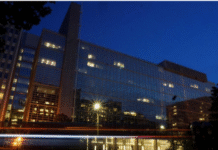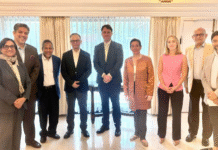 The wage rate of the country’s RMG workers is not increasing in tandem with the increase in production and export earning in the sector, says Chairman of Dhaka University’s Economics Department Prof MA Taslim.
The wage rate of the country’s RMG workers is not increasing in tandem with the increase in production and export earning in the sector, says Chairman of Dhaka University’s Economics Department Prof MA Taslim.
“Since the fiscal 2006-2007, the RMG production has had three-fold increase, but the labour force has not increased accordingly. This indicates the wage rate is not increasing as per the productivity,” he told a national dialogue on RMG workers’ issues on Monday.
The dialogue was organised by Power and Participation Research Centre (PPRC) at LGED auditorium.
In fiscal 2005-2006, the export earning from the sector stood at US$ 8 billion and it hit US$ 21.5 billion in fiscal 2012-13.
Taslim said, “Given the higher increase in export earning compared to the number of labor force, the employers cannot deny the increase in the profit.”
“The employers can only deny the factor of their profit making only on the ground that the capital labour ratio decreasing. If that happens, they must be accused of unsustainable expansion of the industry,” he said.
The DU professor also noted that the scarcity of specific data on the number of workers in the sector still does not allow an economist to figure out the accurate ‘value marginal product’ upon which the wages of workers are fixed in best practicing countries.
The number of workers employed in RMG, textiles and all aligned sectors was counted 1.7 million in the Labour Survey 2005, although the BGMEA (Bangladesh Garment Manufacturers and Exporters Association) said the RMG sector alone employed 2.4 million workers at that time.
“I’ve requested three former BGMEA presidents to have an accurate database of workers to resolve the issues more systematically. We still don’t have the database,” he complained.
Speaking on the occasion, Industry All Bangladesh Council secretary general Roy Ramesh said the wages of the RMG workers in the country is nowhere near to the amount needed to ensure the bare provision of a living.
“Even to be in line with the Millennium Development Goals (MDGs), a person must earn above US$ 120 a month to be able to remain above the poverty line,” he said.
Source: UNB Connect









